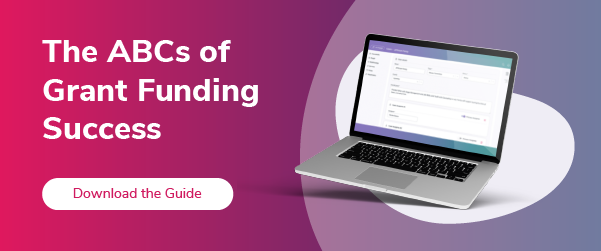As an organization, you have to be able to pivot between funders to position yourselves for grants for which you’re eligible. The adaptability needed to convey different tones and key points in your work will ensure your longevity.
In this post, you’ll learn more about how to build your institutional strategy to ensure sustainability. Nonprofits need to communicate effectively to multiple types of institutions. In order to successfully pivot, you must be able to speak their language without losing your own voice.
The best way to ensure that you’re able to appeal to multiple audiences without losing your vision and mission is to start from a strong proposal template (more on that here). After you have your template, be sure to adjust, and add/remove based on the key factors that each institution outlines in their application guidelines (usually on the RFP or institution’s website).
Government funders are interested in your stats—they want to know what you’ve done, why you’re the best person/organization for the job, who you have behind you supporting you (elected officials, other community-based-agencies, etc.) and all of the indicators that you will be successful. With public funds, they are looking for an analytical and very formal tone that convinces them you’ll succeed.. They’re aware of the need—that’s why they’ve issued an RFP, to address their current issue. Relevant citations, Specific Measurable Realistic and Timebound (SMART) objectives, and a comprehensive program design and evaluation method will help set you up for success.
Foundations are moved by a blend of the heart-mind narrative with analytics sprinkled in. Since they have larger scopes than government funders (meaning they can support anything from environmental causes to youth development) your tone should be compelling, outline the evidence-based need, but also really highlight the significance their partnership will bring to your community/target population. Foundations want to see your track record, yes, but they also want to know what your plan is to achieve the change you wish to make in the world. SMART objectives, with an educational tone that balances the engrossing need, with you uniquely positioned to utilize their funds in order to make a difference.
Corporate funders are far more interested in the work you’re doing on the ground, ie. the collective action you’re currently taking. Less focused on SMART deliverables, they’re more interested in the scope of your programming: how many people you’re reaching, how many of their employees will have the opportunity to volunteer, how long it will take you to achieve your goals? Corporate funders on average are less interested in long-term projects, they will fund a year-long program, but corporate sponsorships for events make up the large sum of corporate responsibility grantmaking. Your tone should be lively, excited, and heart-mind reaching.
At the end of the day, a strong strategy is one that incorporates all of these factors into your overarching proposal narrative. Center yourself in your work, be sure you have the clear narrative of why you’re doing this work (your need) what it will do for your community (the impact) what the solution is (program/project design & use of funds) and of course how you will report back and grow (evaluation framework.)
Best of luck! And remember, be confident in the work your organization is doing; don’t change your entire program design just to fit into a guideline. Just speak true words, aligned with your mission, in the funders’ language.
In the next post, you’ll learn more about how grant funding can empower organizations to grow their capacity and scale their impact.

-1024x512.png)

